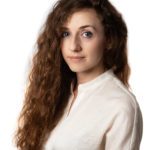Link to Pubmed [PMID] – 29775591
Link to DOI – S0092-8674(18)30576-210.1016/j.cell.2018.05.003
Cell 2018 05; 173(5): 1073-1081
A major challenge in the field of neurodegenerative diseases and brain aging is to identify the body’s intrinsic mechanism that could sense the central nervous system (CNS) damage early and protect the brain from neurodegeneration. Accumulating evidence suggests that disease-associated microglia (DAM), a recently identified subset of CNS resident macrophages found at sites of neurodegeneration, might play such a protective role. Here, we propose that microglia are endowed with a dedicated sensory mechanism, which includes the Trem2 signaling pathway, to detect damage within the CNS in the form of neurodegeneration-associated molecular patterns (NAMPs). Combining data from transcriptional analysis of DAM at single-cell level and from human genome-wide association studies (GWASs), we discuss potential function of different DAM pathways in the diseased brain and outline how manipulating DAM may create new therapeutic opportunities.
